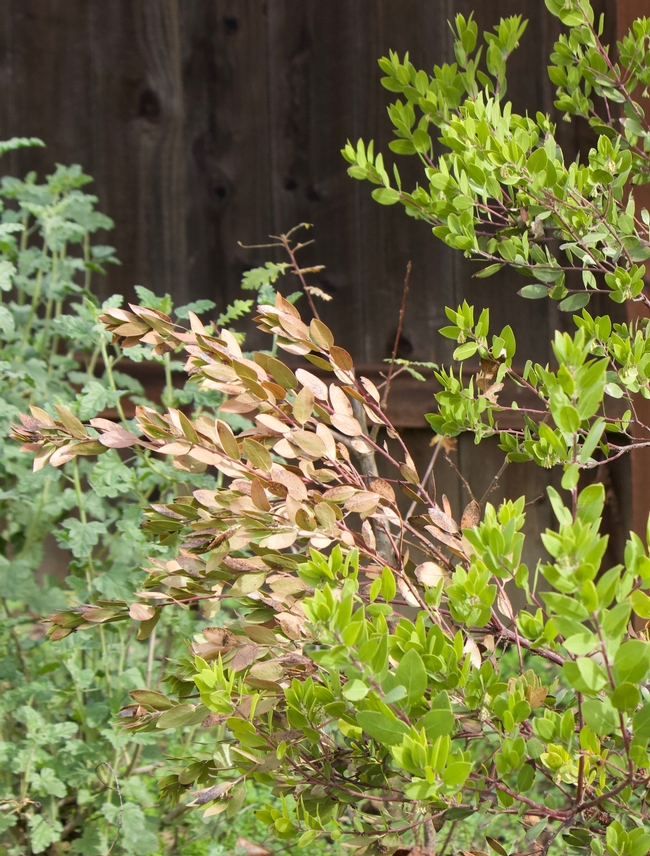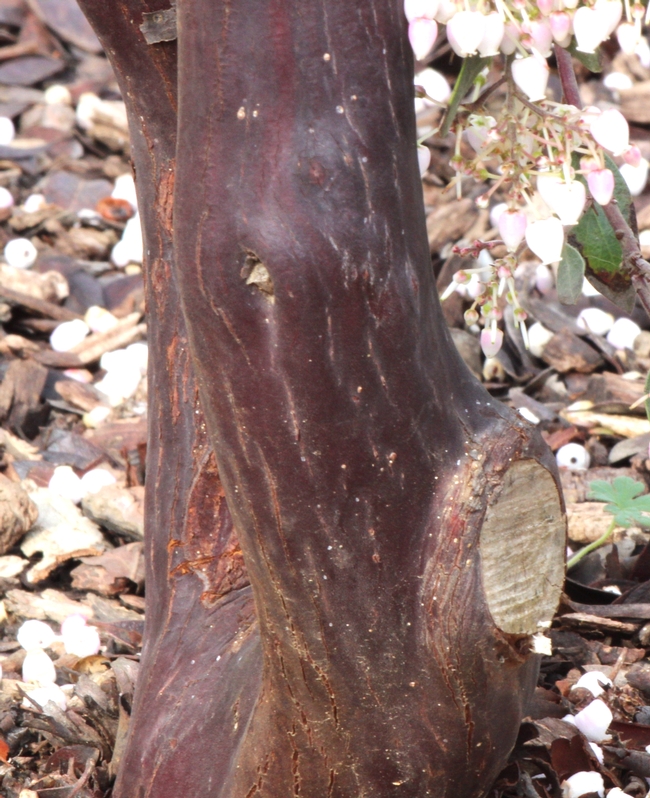The Haven volunteers and I are busy doing winter pruning. I'm often asked about pruning by garden visitors: what to prune, when to do it, and how much to cut back. We prune most of our plants fairly hard to stimulate as much new growth as possible since new growth often produces more flowers. After all, making flowers to feed the bees is what we're all about!
We perform this task every year in late January and into early February. We delay pruning until then to provide forage and cover for the many birds that use the Haven and to ensure that any frost damage is confined to the outer part of the plant. Here's how we prune different types of plants at the Haven.
Herbaceous perennials
These plants are typically cut back to the base, although in the case of plants like milkweed that are late to re-sprout, it can be helpful to leave visible stems so you'll remember where the plant is located. Some examples from the Haven:
The first photo shows calamint, Calamintha nepetoides, just before pruning. You can clearly see last year's dead flower stalks with this year's new growth at the base. Cut the old stalk down to the top of the new growth.
The next picture is sedum 'Autumn Joy', Hylotelephium 'Autumn Joy' just after pruning. Isn't the new growth cute? It looks like tiny heads of lettuce! I prune this plant earlier -- in late fall or early winter -- as the hollow stems make great overwintering sites for beneficial insects like ladybird beetles.
The final example is 'Walker's Low' catmint, Nepeta x faassenii 'Walker's Low'. No need to be gentle with this plant; we prune ours with electric hedge trimmers. The photos show the same patch of plants before and after pruning. 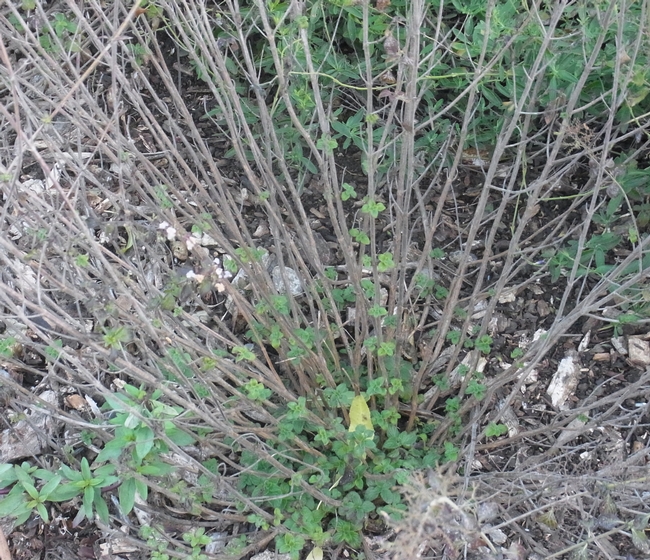
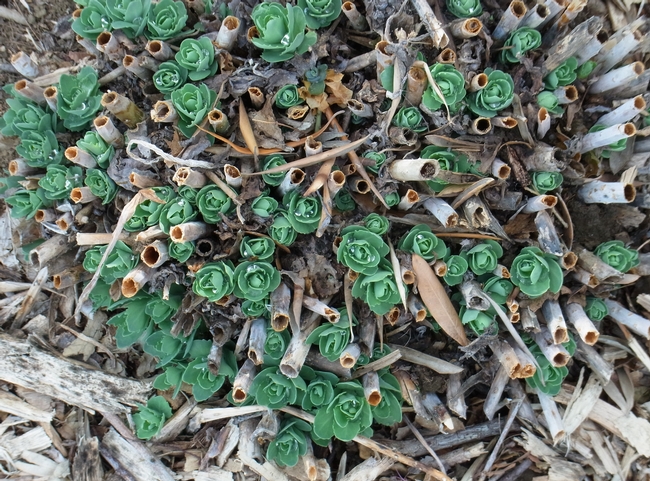
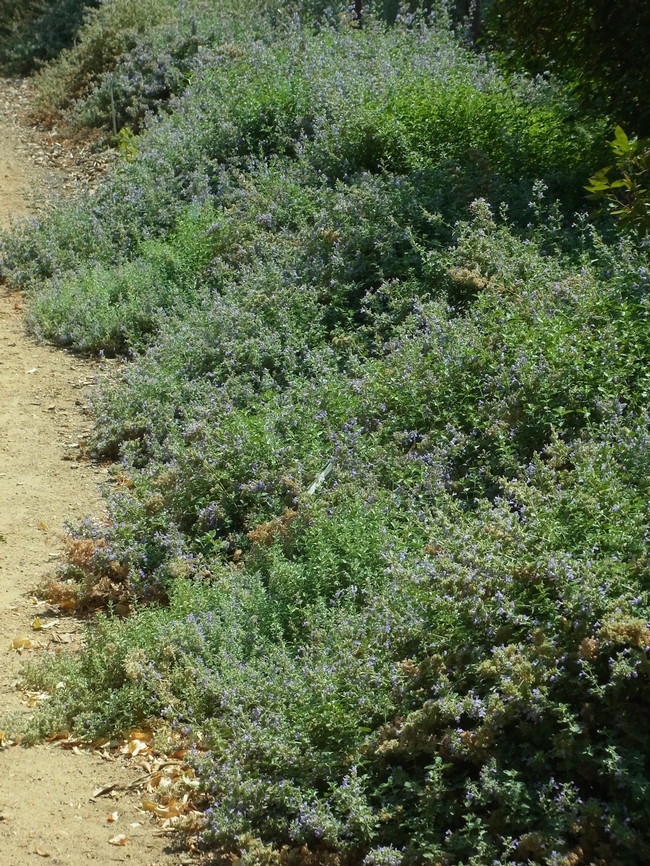
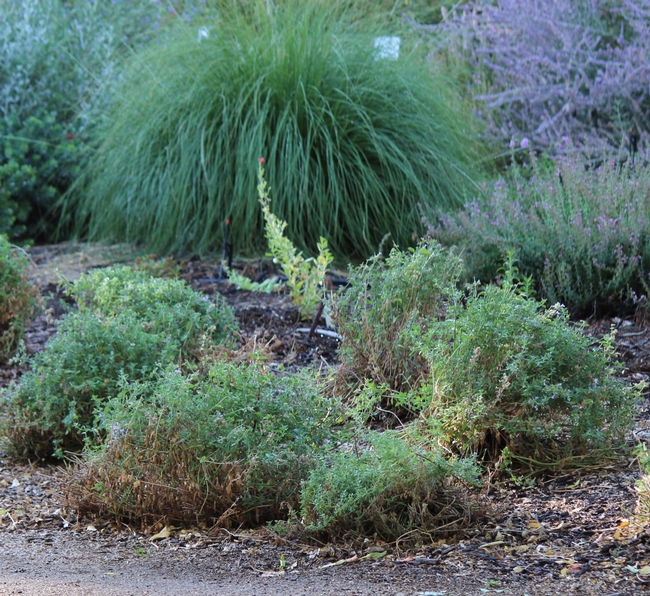
Woody perennials
Many woody perennials can be cut back hard to increase bloom. Two that are excellent candidates for this are the sages (Salvia spp.) and California fuchsia, Epilobium canum. Trim sages back to 6 to 12 inch stems to stimulate new growth at the base that will produce copious flowers from the following spring through fall.
California fuchsia is a great bee garden plant that provides nectar in late summer and fall when there are often few other nectar sources. It does tend to spread, and pruning a large patch by hand can be time-consuming. Run a lawn mower over it .... it will look terrible when you're finished but the reward will be ample flowers the next year.
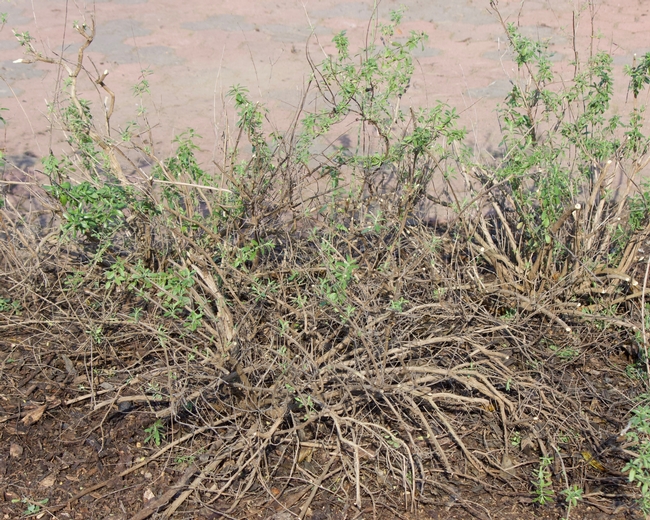
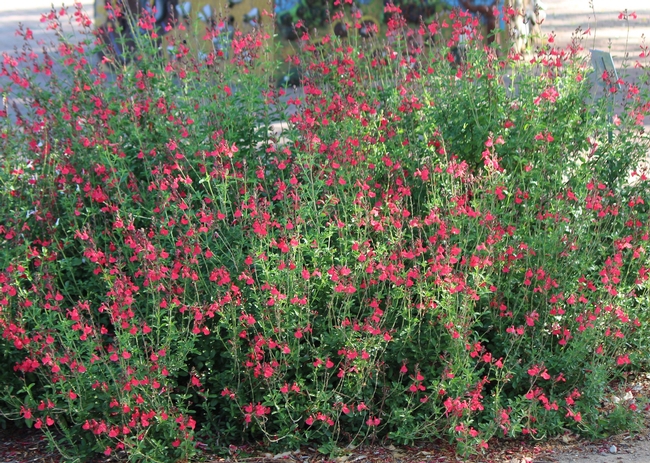
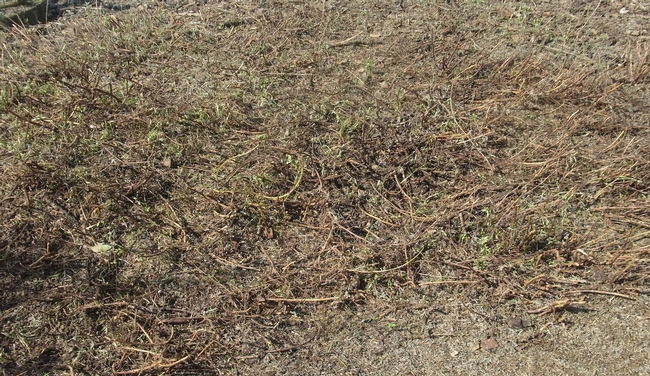
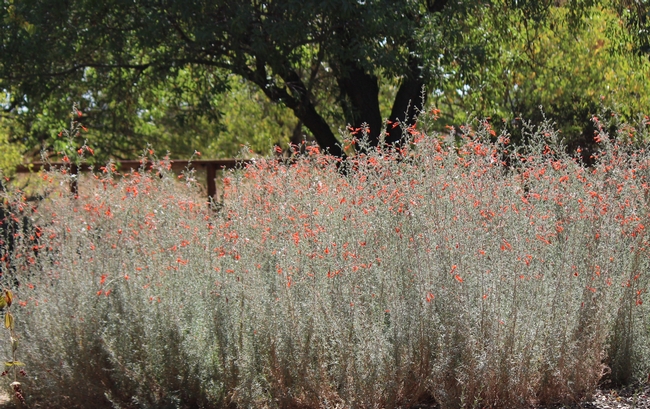
Woody shrubs that bloom on new growth
Some woody plants are pruned more like herbaceous perennials because they bloom on new growth. If they're not pruned hard there will be little in the way of flowers next year. The example here is bluebeard, Caryopteris x clandonensis; stems are trimmed to 6 to 12 inches in length just above a node where new growth is emerging. It doesn't look like much in the winter after it's pruned, but it returns beautifully once spring comes and flowers nicely all summer and fall. Another common bee garden plant that needs to be trimmed this way is Russian sage, Perovskia atriplicifolia. 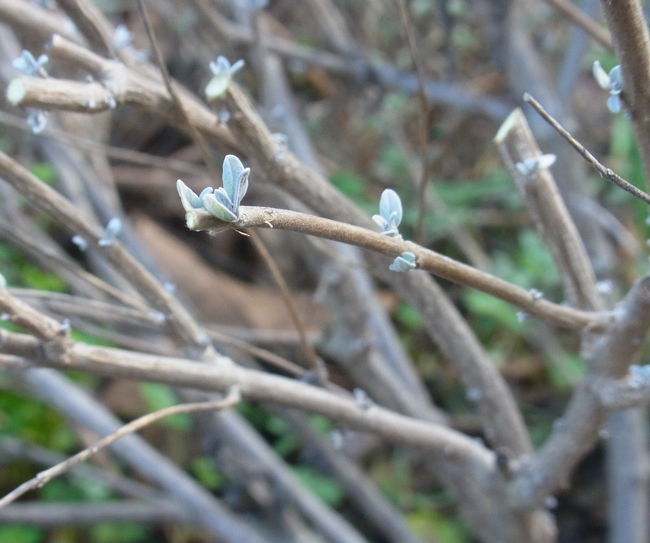
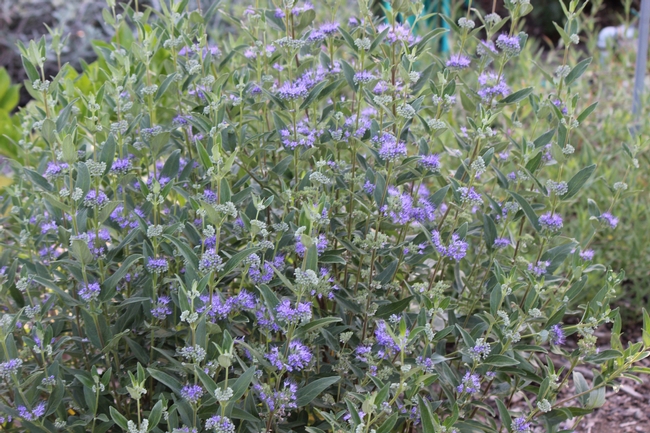
Renewal pruning
Many woody shrubs can be cut back hard for renewal. Plants that have excessive dieback or that tend to get woody and unproductive with time are great candidates for this.
The first example is 'Valley Violet' ceanothus. This plant showed quite a bit of dieback by last fall. It was pruned hard (its size was reduced by about 2/3); the first photo shows how nicely it is growing back. We won't get much bloom this year, but by next winter it will be covered with nutritious flowers for our bees.
Another candidate for this treatment is coyote brush, Baccharis pilularis; ours is the cultivar 'Twin Peaks'. Over time this plant tends to accumulate a lot of woody stems that don't produce flowers. We cut this back in the fall to the pile of sticks shown in the first photo; look at how nicely it comes back by spring.
This guide from UC Cooperative Extension has more information about tree and shrub pruning.
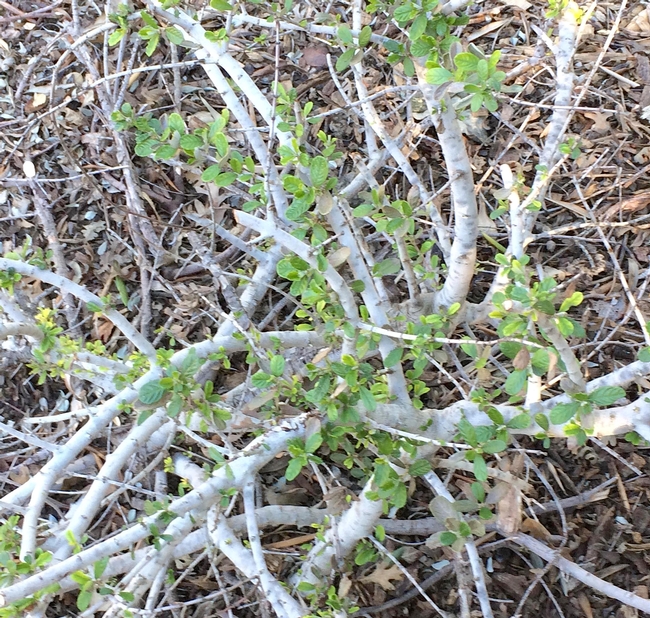
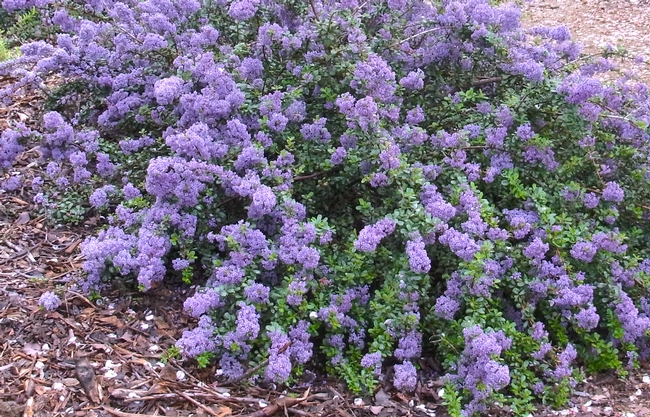
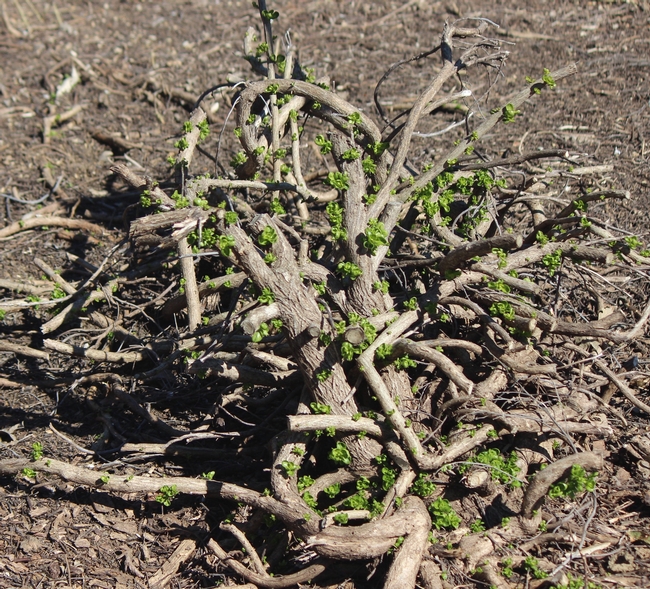
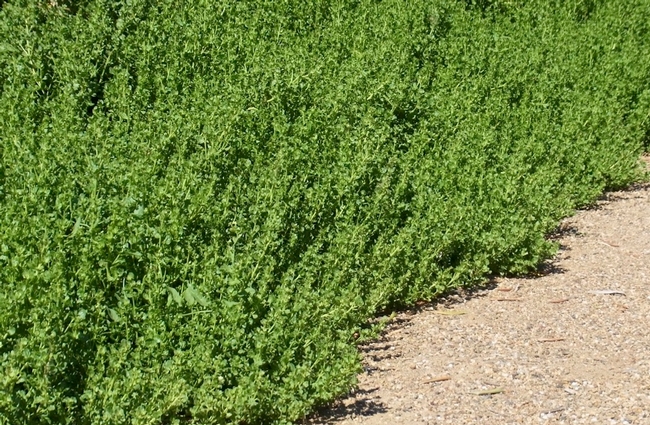
Grasses
We have native bunchgrasses in the Haven, which are sometimes used by bumble bees for nesting. They can nest at the base of the plant itself or in the ground immediately around the plant. We grow California fescue 'Phil's Silver' (Festuca californica 'Phil's Silver) and deergrass (Muhlenbergia rigens) at the Haven. Neither is pruned in late winter, but for the sake of being thorough I've included them. We prune the fescue in early summer (around the time it goes dormant) to prevent excessive re-seeding. Deergrass is pruned every other year in fall, which provides sufficient time for new growth to develop by spring. As you can see from the photos, neither is particularly attractive after it's cut back.
Pruning is not essential for maintenance of these plants, but it does provide a neater appearance in the landscape. To be safe, check for the presence of nests at the base of these plants before pruning. 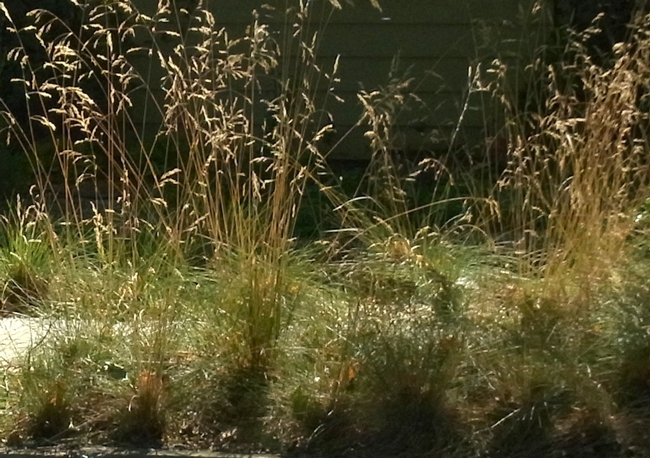
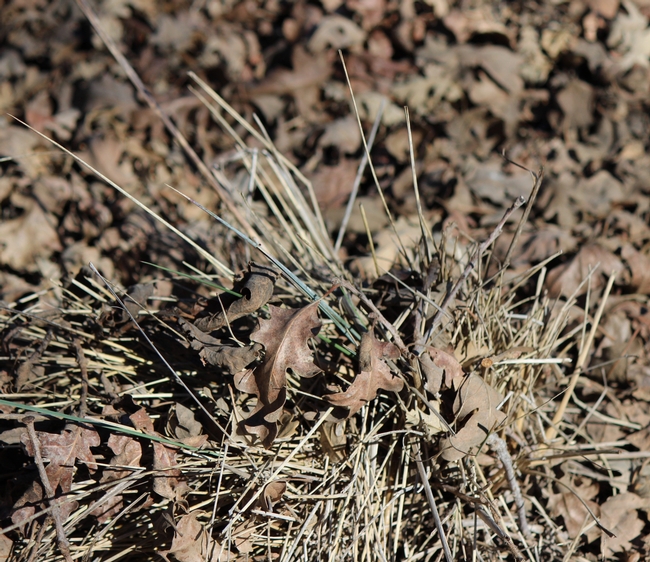
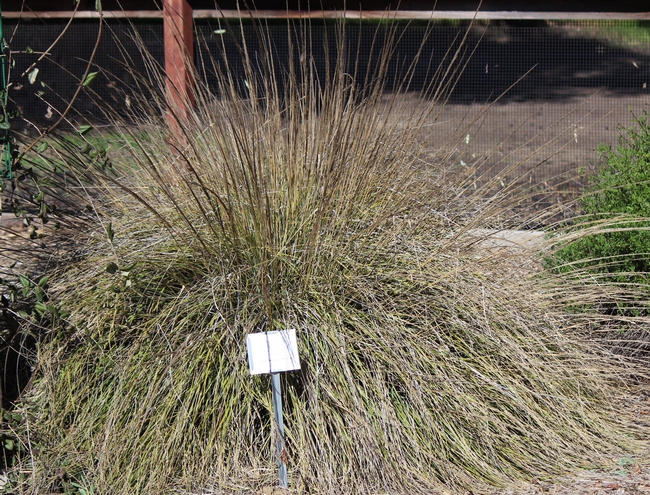
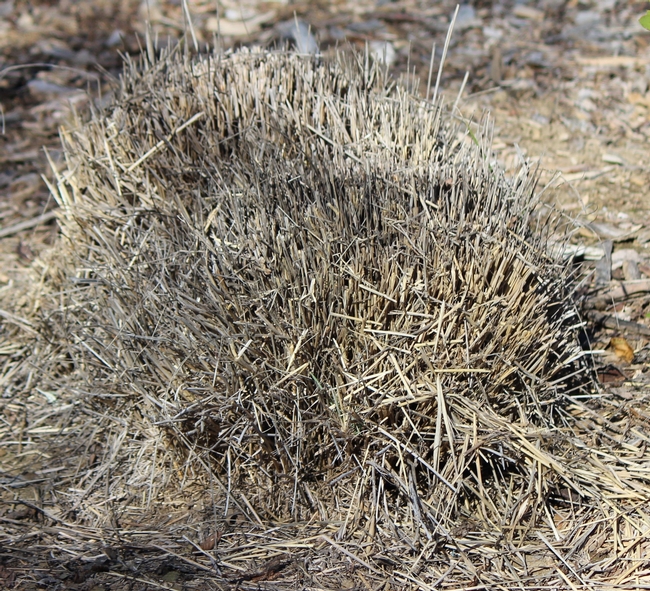
Fruit tree pruning
We also prune our orchard during the winter. This is especially important for us during the next few years as our young (planted in 2016-2017) trees develop their shape. As shown in the before and after pictures, the goal at this time is to develop a bowl shape with an open center. Prune off any branches that come out from the main trunk at very shallow or steep angles....ideally branches should be between 40 to 60 degrees off the main stem. Anything else tends to be weak and may snap under the weight of a load of fruit. For the same reason, aim for balance around the trunk: you can see that I've left three equally spaced branches at each node. I'll likely remove the lower set of branches during next year's pruning; for now their foliage provides valuable photosynthesis to help this young tree grow.
For more information about fruit tree pruning, check out this information from UC Cooperative Extension.
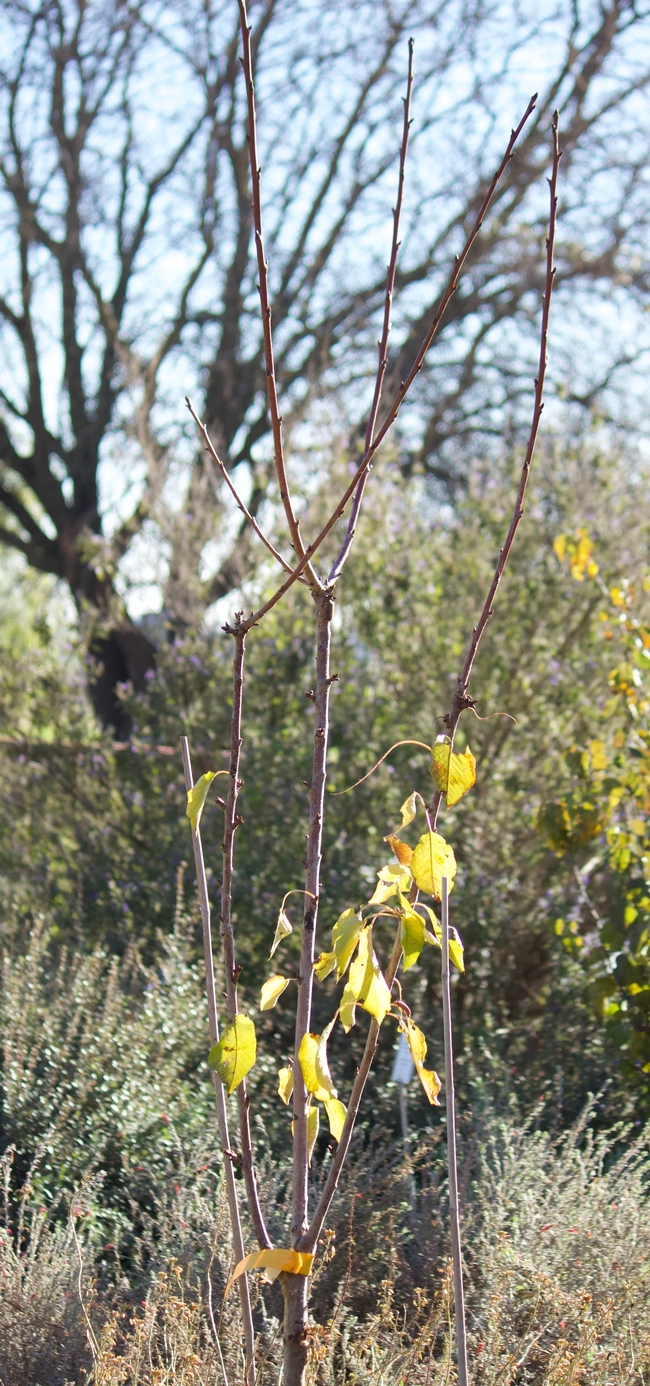
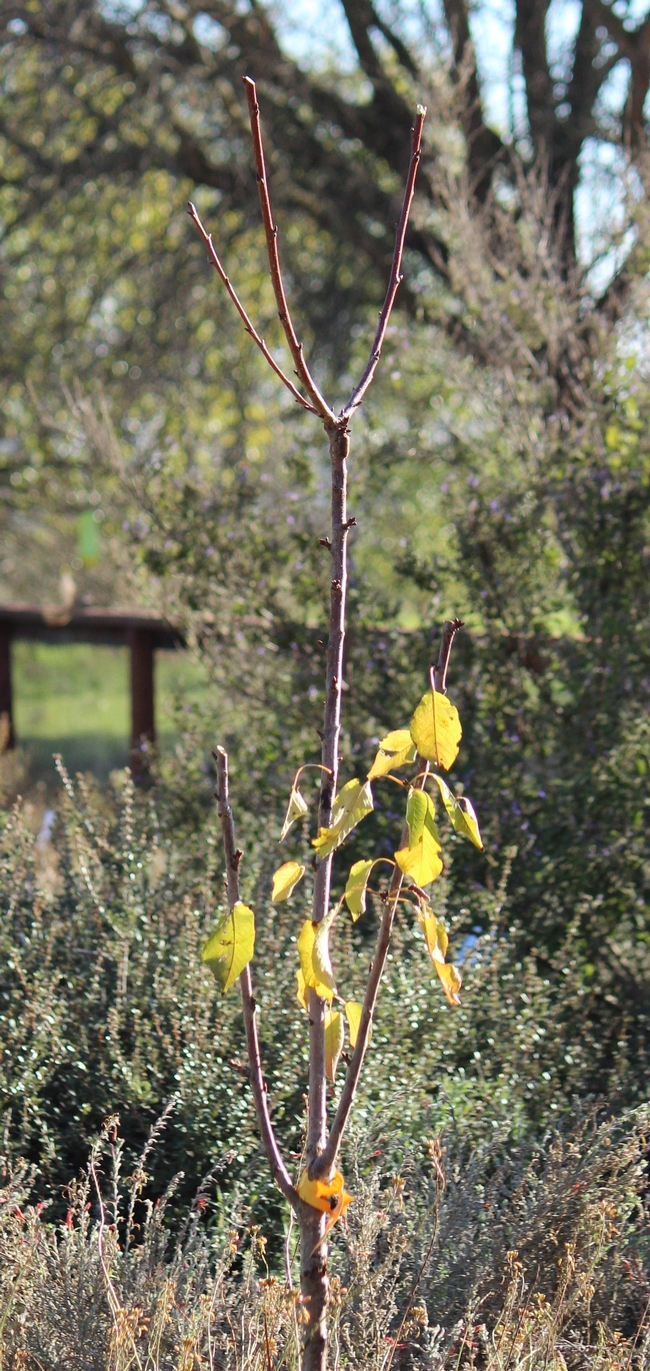
Dead branches
Dead branches should be pruned immediately, regardless of the time of year. There's also no need to use wound dressing, as correct pruning cuts are done so that regenerative tissue remains on the plant and it heals itself.
